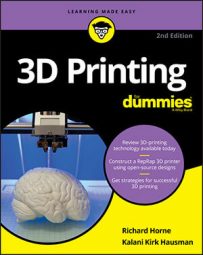It's ironic that the success of a low-cost self-replicating machine now makes it so hard for manufacturers to keep up with demand that some companies choose to mass-produce parts. This situation leads to a few issues for customers. One problem is that if you can't always reprint some of the parts for your machine, it's harder to upgrade, repair, or self-replicate.
These issues aren't problems, however, if all you want is a 3D printer and have little interest in RepRap's self-replicating or sharing nature. Many machines can fill the bill, and almost all of them started from a RepRap branch or use its core technology. Some machines' manufacturers still class the machines as RepRaps, whereas others aim to hide those origins.
The one thing that keeps RepRap on top is the fact it can upgrade itself. Other printers that are made up of mostly laser-cut parts, prefabricated frames, or custom injection-molded parts can print the parts for a RepRap, even if they can't print parts to replicate themselves. In this respect, RepRap technology becomes ever more fertile, and other machines become sterile and risk constant obsolescence.
So it's easy to see that every 3D printer manufactured during the past 30 years or so can help RepRap grow bigger and better; even the mass-manufactured machines of recent years contribute to the overall goals of the project.
Think about what you need a 3D printer for and whether the benefits of RepRap outweigh those of the other options.
RepRap is an open-community project, and its technology forms the basis for almost all new home 3D printers. But RepRap stays vibrant and ahead of the game because of its diversity and the sheer number of dedicated, loyal users and developers in its worldwide community.One of the core benefits of RepRap is the total control you have over making changes and enhancements to your printer. People and companies around the world make changes, upgrades, and enhancements of RepRap on a daily basis, so almost any improvement or enhancement you can imagine has already been implemented by one developer or another — someone who has probably made that improvement available to you.
This open-source concept isn't just for machine-based improvements. You can also find upgrades for software, print material settings, and machine firmware (software running on the electronics of the printer), all of which can help you avoid a lot of frustrations. The print material settings in particular are becoming important areas for adjustment and tuning. Many consumer printer manufacturers, for example, lock down the settings of their printers so that you can print only with a specified material or at specified speed and quality settings. With a RepRap printer, however, you can print with simple settings or alter virtually any aspect of the machine. This flexibility becomes really important when you're trying to create adventurous objects or want to print with new or unusual materials.
Not everyone will want this much control, of course, but pretty much anyone can appreciate the freedom that this flexibility offers. With RepRap, you're not limited by arbitrary manufacturer settings. You're limited only by your own imagination.

